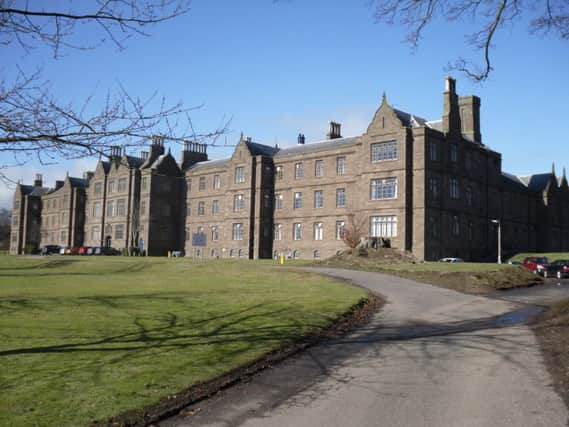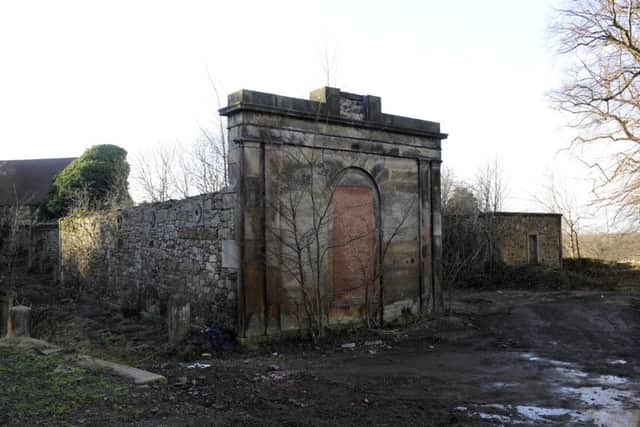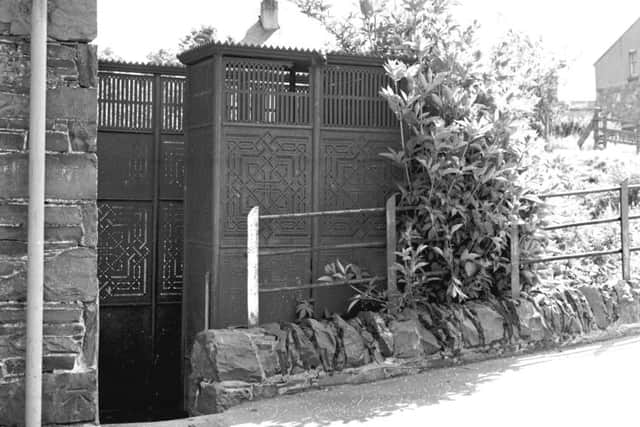In detail: Scotland’s at risk historic buildings


Identifying at-risk structures of architectural value or historical merit and cataloguing their condition is the responsibility of The Buildings at Risk Register for Scotland. Country houses, castles and villas are all included - but so to are former factories, footbridges and even public toilets.
While some are earmarked for refurbishment, others stand forlornly awaiting whatever the future may bring.
Advertisement
Hide AdThe Scotsman has profiled several of the lesser-known structures on the register to offer a snapshot of the country’s sometimes forgotten history and their development potential.


SUNNYSIDE HOSPITAL, MONTROSE
Built in 1855-7 on a hillside site five miles north of Montrose, the imposing Sunnyside replaced the Angus town’s Royal Asylum, which was founded in 1781 and was Scotland’s first purpose-built psychiatric institute. The hospital now lies empty after a gradual closure of its remaining NHS services. It is now being marketed for sale.
NORTH BRITISH RUBBER COMPANY OFFICES, EDINBURGH
This C-listed building in Fountainbridge is all that remains of the North British Rubber Company factory, built in 1856. During the First World War it produced more than a million pairs of boots for the British Army. The factory which was largely demolished in 1971 after the firm moved to Newbridge. The site was subsequently taken over by the Scottish & Newcastle brewery, which closed in 2004. There are now plans to turn the building into art studios and a community facility.


HARBOUR PILOT HOUSE, IRVINE
An unusual maritime building, this four-storey tower once housed a machine known as ‘Boyd’s Automatic System’, used to calculate the depth of the nearby sea for the benefit of passing ships. This novel device was patented by a local harbour master, George Boyd, in 1904. The tower’s present owners, Coastwatch Scotland, have plans to convert it into a wildlife observation platform and meeting room.
REDHALL HOUSE, EDINBURGH
A substantial 18th century mansion with late Victorian additions in the Craiglockhart district of the capital. The house was sold to Edinburgh Corporation in 1945 and was used first as a children’s home and then council training offices. The building currently lies empty, but has been sold to a property developer.
TARLAIR COMPLEX, ABERDEENSHIRE
An early art deco leisure complex including an outdoor tidal swimming pool, a boating pond and a paddling pool. It is one of only three surviving outdoor pools in Scotland and the only example which retains its original appearance. Tarlair opened in 1931 and proved a popular holiday destination until its closure in 1995. A refurbishment plan was proposed by Aberdeenshire Council last year.
WALKERBURN URNINAL, SCOTTISH BORDERS
Advertisement
Hide AdAn idiosyncratic public urinal no longer in use. This A-listed structure dates from 1897 was made by the famous Saracen foundry of Possilpark, Glasgow - the most important manufacturer of ornamental ironwork in Scotland. Among other, grander, Saracen survivors is the Kibble Palace in Glasgow Botanic Gardens.
INCHDREWER CASTLE, ABERDEENSHIRE
This late 15th century tower house was once the seat of the Ogilvies of Dunlugas and became their main family seat. It survived attacks by a Covenanter army in 1640 and a Jacobite force in 1746. The castle was last occupied in 1836 but underwent an external restoration in the late 1960s. Its last owner was the late Count Robin Mirrlees de la Lanne, a colourful Scottish aristocrat and friend of the author Ian Fleming. There has been much speculation that the character of James Bond was based in part on the count.
RAIL FOOTBRIDGE, DUNFERMLINE
Advertisement
Hide AdThe long closed Dunfermline - Stirling mainline once ran under this attractive footbridge in Dunfermline, a throwback to the glory days of steam. The bridge now lies redundant and unloved, positioned awkwardly near a car park. A C-listed structure, it will take an imaginative proposal to bring it back into some form of use.
ROTHESAY PAVILION, BUTE
Perhaps the finest example of the International architectural style of the 1920s and 1930s north of the border. Rothesay Pavilion opened in 1938 and was a familiar destination to thousands of Scottish tourists in the 1950s and 1960s. While it has always remained open and home to local activity groups, the building has suffered from years of underinvestment and its appearance began to suffer. Happily, major funding has been secured for its refurbishment, promising the pavilion a new lease of life.